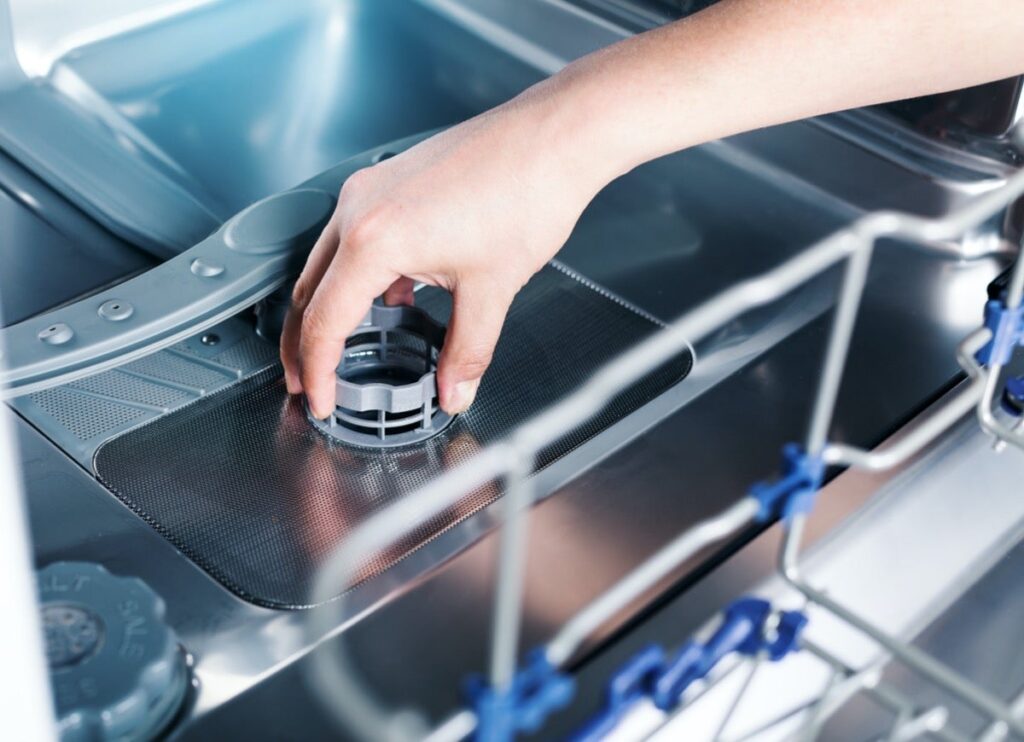Introduction
Water Not Draining Dishwasher
Having a dishwasher at home can make our lives easier by efficiently cleaning and sanitizing our dishes. However, encountering an issue where water doesn’t drain properly can be frustrating. In this article, we will explore the common reasons behind water not draining in a dishwasher and provide practical solutions to resolve the problem. So, let’s dive in and discover how to tackle this issue effectively.

Table of Contents
- Understanding Dishwasher Drainage Systems
- Possible Causes of Water Not Draining
- Clogged Drain Filter
- Blocked Drain Hose
- Malfunctioning Drain Pump
- Improper Installation
- Step-by-Step Troubleshooting Guide
- Check and Clean the Drain Filter
- Inspect the Drain Hose
- Examine the Drain Pump
- Verify Proper Installation
- Additional Tips to Ensure Proper Drainage
- Scrape Off Excess Food
- Rinse Dishes Before Loading
- Use the Correct Detergent
- Avoid Overloading the Dishwasher
- Run Hot Water Before Starting the Dishwasher
- Conclusion
- FAQs
- Why is my dishwasher not draining?
- How often should I clean the drain filter?
- Can I use vinegar to clean the dishwasher drain?
- Is it normal to have a little water left in the dishwasher after a cycle?
- Should I attempt to repair the dishwasher myself?
Understanding Dishwasher Drainage Systems
Before we delve into troubleshooting, it’s essential to have a basic understanding of how dishwasher drainage systems work. Dishwashers are equipped with a drainage pump that expels used water from the tub, directing it toward the drain hose. The drain hose, in turn, carries the water to the sink’s plumbing or a dedicated drain pipe. Any disruption or blockage along this path can lead to water not draining properly.
Possible Causes of Water Not Draining
Clogged Drain Filter
A clogged drain filter is a common culprit behind drainage issues in dishwashers. Over time, food particles, debris, and mineral deposits can accumulate in the filter, obstructing the water flow. This impediment prevents water from draining effectively, causing it to pool at the bottom of the dishwasher.
Blocked Drain Hose
Another potential cause of water not draining is a blocked or kinked drain hose. The drain hose connects the dishwasher’s drain pump to the sink’s plumbing or drain pipe. If the hose is obstructed or bent, it restricts the water flow, resulting in poor drainage.
Malfunctioning Drain Pump
The drain pump is responsible for expelling water from the dishwasher’s tub. If the pump becomes faulty or fails to operate correctly, it can hinder proper drainage. This malfunction may manifest as water not draining or draining very slowly.

Improper Installation
Improper installation of the dishwasher can also contribute to drainage problems. If the drain hose is not connected or positioned correctly, it can impede water flow. Additionally, inadequate leveling or an incorrect installation angle can cause water to accumulate instead of draining properly.
Step-by-Step Troubleshooting Guide
To resolve the issue of water not draining from your dishwasher, follow these troubleshooting steps:
Check and Clean the Drain Filter
Start by locating the drain filter in your dishwasher. Typically, it is located at the bottom of the dishwasher’s tub. Remove the filter and thoroughly clean it under running water. Ensure that there are no food particles or debris obstructing the filter. Once clean, reinstall the filter back into its position.
Inspect the Drain Hose
Afterward, carefully examine the drain hose for any indications of blockage or kinks. Disconnect the hose from both ends and use a flashlight to check for obstructions. If you find any debris, gently remove it using a long brush or pipe cleaner. Straighten out any kinks in the hose before reattaching it securely.
Examine the Drain Pump
Carefully inspect the drain pump to determine if it is functioning correctly. Refer to your dishwasher’s manual for the specific location of the pump. If you notice any visible damage or irregularities, it may be necessary to replace the pump. However, if the pump appears to be in good condition, move on to the next troubleshooting step.
Verify Proper Installation
Ensure that your dishwasher is installed correctly. Check the alignment of the drain hose, making sure it is not twisted or obstructed. Confirm that the dishwasher is level and securely attached to the countertop. Adjust the position if necessary, following the manufacturer’s instructions.
Additional Tips to Ensure Proper Drainage
In addition to troubleshooting the specific issue of water not draining from your dishwasher, here are some general tips to maintain optimal dishwasher performance:
Scrape Off Excess Food
Prior to placing your dishes in the dishwasher, make sure to remove any significant food particles by scraping them off. This practice prevents excessive debris from accumulating in the dishwasher’s filter and prolongs its lifespan.
Rinse Dishes Before Loading
To minimize the risk of food particles clogging the drain filter, give your dishes a quick rinse before placing them in the dishwasher. This step helps to remove loose debris and ensures a cleaner wash cycle.
Use the Correct Detergent
Using the appropriate dishwasher detergent is vital for achieving proper drainage. Choose a high-quality detergent specifically formulated for dishwashers. Avoid using regular dish soap or excessive amounts of detergent, as this can lead to excess suds and drainage issues.
Avoid Overloading the Dishwasher
Overloading the dishwasher can impede water flow and hinder proper drainage. Be mindful of the dishwasher’s capacity and arrange dishes in a way that allows water to circulate freely. This practice ensures thorough cleaning and efficient drainage.
Run Hot Water Before Starting the Dishwasher
Before starting a dishwasher cycle, run hot water from your faucet until it reaches its highest temperature. This step helps the dishwasher operate more effectively by starting with hot water from the beginning, enhancing the cleaning and drainage process.

Conclusion
Water not draining from a dishwasher can be a frustrating issue, but it is often solvable with the right troubleshooting steps. By cleaning the drain filter, inspecting the drain hose and pump, and ensuring proper installation, you can address common causes of poor drainage. Additionally, following general maintenance tips will help keep your dishwasher in excellent working condition. Remember to refer to your dishwasher’s manual for specific instructions and seek professional assistance.
FAQs
Why is my dishwasher not draining?
There are several potential causes for a dishwasher not draining, including a clogged drain filter, blocked drain hose, malfunctioning drain pump, or improper installation. Please refer to the troubleshooting guidelines provided in this article to effectively pinpoint and rectify the problem.
How often should I clean the drain filter?
It is recommended to clean the dishwasher’s drain filter once every month or as needed. Regular cleaning prevents the accumulation of debris and ensures proper drainage.
Can I use vinegar to clean the dishwasher drain?
Yes, vinegar can be used to clean the dishwasher drain. Fill a dishwasher-safe cup or bowl with white vinegar and place it on the top rack of an empty dishwasher. Run a hot water cycle to allow the vinegar to clean and remove any buildup in the drain.
Is it normal to have a little water left in the dishwasher after a cycle?
Yes, it is normal to have a small amount of water left in the dishwasher after a cycle. This residual water helps to keep the seals moist and prevent them from drying out. However, if you notice a significant amount of water remaining, it may indicate a drainage issue that needs to be addressed.
Should I attempt to repair the dishwasher myself?
It depends on your level of expertise and comfort with appliance repairs. Some issues, such as cleaning the drain filter or unclogging the drain hose, can be tackled by homeowners. However, if you are unsure or the problem persists after troubleshooting, it is advisable to seek assistance from a professional dishwasher repair service.
In conclusion, troubleshooting water not draining from a dishwasher requires a systematic approach. By checking and cleaning the drain filter, inspecting the drain hose and pump, verifying proper installation, and following general maintenance tips, you can resolve common drainage issues. Remember to consult your dishwasher’s manual for specific instructions and seek professional help if needed. Enjoy the convenience of a fully functioning dishwasher and sparkling clean dishes!
